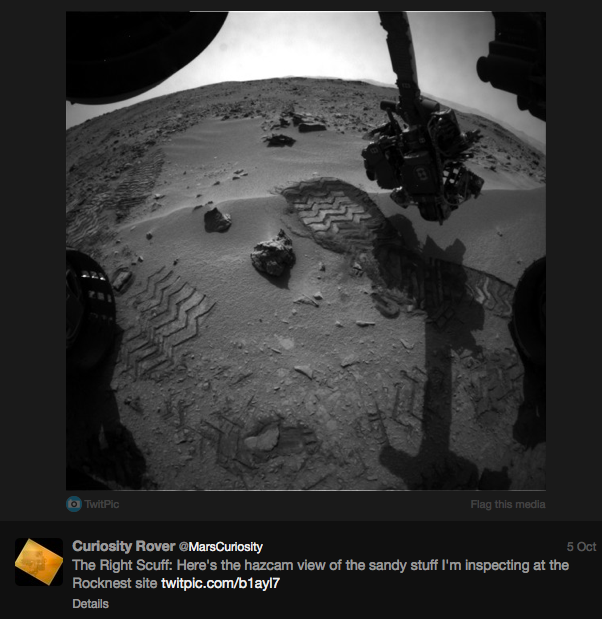
They have fewer staff and much less money in their budgets yet nonprofits are leaving brands in the dust when it comes to social media innovation.
Small Oklahoma charity WaterIsLife found worldwide recognition for its video about the #FirstWorldProblems Twitter meme through the eyes of impoverished Haitians.
It immediately struck a chord with a social media audience and has more than 2.5 million views on YouTube. Even if only a fraction of those views result in donations or social connections, it will still be a huge success for the tiny nonprofit.
Meanwhile, in brandland, Coke is still using its Facebook page to distribute vintage cola pictures and McDonalds is promoting an offline monopoly game. Yawn.
Give a Little
The key to nonprofit innovation, it seems, is need. A joint Idealware/MAP for Nonprofits study in 2011 found organisations who were able to make small investments in technology became much more efficient.
‘An individual identified a need, connected it with existing technology, and improved his or her organization’s ability to deliver services,’ Laura Quinn wrote about the findings.
Marketing strategist Brian Reich puts it more bluntly. The little m media founder says organisations have to innovate or they will die, leaving in the lurch those people they were trying to help.
“We are at this incredible moment with the evolution of tools that nonprofits can play this really exciting role looking past incremental changes and … do things we didn’t think were possible,” he told the Nonprofit Technology Network (NTEN).
“If you’re addressing hunger and poverty, you go slow and safe while the world hockey-sticks, people suffer. There are real consequences to our inability to move at the speed the world is going.”
It Goes Both Ways
Not only are charities using technology to innovate but technology innovators like internet startup companies are increasingly using their powers for good.
Social enterprise has been around since the dawn of time but recently companies have been doing more than donate money – instead offering their staff and resources to the nonprofit sector.
Stanford University associate professor Debra Dunn told the New York Times said nonprofit and business sector managers had realised they had plenty to learn from each other.
“We went through all these decades where we had nonprofits that thought business was evil and sustainability was irrelevant,” Ms Dunn was quoted as saying.
“Now there has been an influx of business thought. People are saying, ‘I have enough money and I care’.”
Jack Be Nimble, Jack Be Quick
I left a high-paying job in newspapers in early 2011 to work for a small nonprofit health agency because I wanted to give something back to my community. I felt like the world was moving too fast in the wrong direction and I wanted to do something to slow it down.
My beloved, who is the IT manager of a housing charity, has a note on his desk that he was given in his first few days at work: “What we do makes a difference, which means you make a difference.”
In order to make the world better, we have to run our organisations better, which means we have to work better.
This is the main thrust of organisational change consultant and author Jamie Notter, who says good nonprofits have to be four things: open, trustworthy, generative and courageous.
Nonprofit benchmarking study Forces for Good authors Leslie R Crutchfield and Heather McLeod-Grant agree.
“The most successful nonprofits, we found, spend most of their time trying to change entire systems by advocating for government policies, tapping into the power of free markets, nurturing nonprofit networks, and building movements of evangelists—individual volunteers and supporters who advance their cause,” they wrote in a blog for the Stanford Social Innovation Review.
“And to be effective at influencing external systems, they share leadership internally and adapt quickly to changing conditions. These then were the six practices that great nonprofits use to have markedly more impact than their peers.”
I find the courage to innovate comes from a need to do better for my community – which might explain why big brands are failing.
What Courage Looks Like
At the crossroads of social education and politics sits the shiny behemoth that is NASA.
At a time when science is threatened on economic and cultural fronts, it is no accident that the social media geniuses at the Jet Propulsion Laboratory are taking the organisation’s work to the masses in such an entertaining, engaging and relevant way.
You won’t find the @MarsCuriosity Twitter account asking for crowd-funding or lamenting the quality of science education in schools. Inherent in its funny, timely tweets is the heart of the matter: that science is hella cool. Every time it is retweeted, it adds to its cheer squad for scientific discovery.
New York charity PopTech’s executive director Andrew Zolli says despite their success, nonprofits have their work cut out for them.
“(The world is) connecting systems in ways that we don’t understand until they fall apart,” he told Philanthropy.com
“We’re all ballroom dancing in the minefield. In an environment like that, we have to be able to prepare our companies, our communities, our organisations to be able to deal with those disruptions.”
